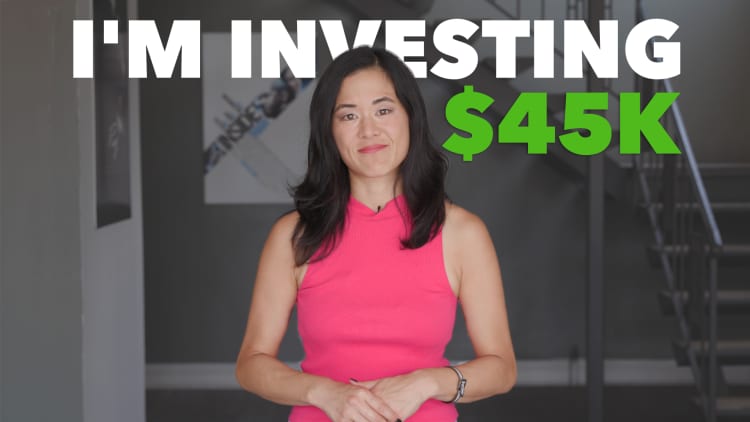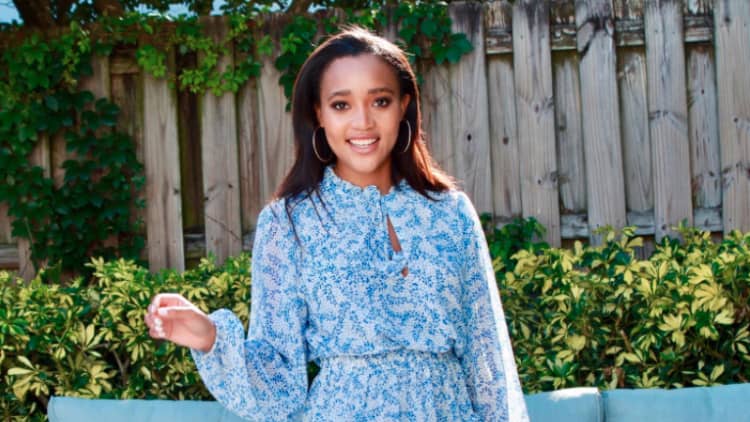If women invested at the same rate as men, there would be an extra $3.22 trillion of assets under management today, according to a recent study from BNY Investment Management.
Beginning to close that gap is essential, says BNY Investment Management CEO Hanneke Smits, and not just for the Fidelitys and Vanguards of the world. For one thing, she points out, women are more likely than men to use investments to support social and environmental causes. Researchers estimate that $1.87 trillion of the $3.22 trillion currently missing from the market would be in so-called ESG investments.
More from Grow:
Meet a 37-year-old whose Fiverr side hustle brings in $7K/month
26-year-old music producer has made nearly $200K on Fiverr since 2019
This musician makes $4,500/month streaming her songwriting process
"We want women to have the confidence to invest — they would drive inflows into the socially responsible investment category, which could be beneficial to the planet," she says. "It would also help them to be financially independent and provide for their children."

Video by Helen Zhao
BNY's study outlines barriers that tend to keep women out of financial markets, and contends that action must be taken at the institutional level to make investing more accessible for all.
In the meantime, experts say that grassroots efforts can help empower women to begin to close the gap. Here's how.
3 investing hurdles women face
The study identifies three primary obstacles that are keeping women out of markets.
- Engagement. Many women feel as if they don't understand investing, with only 28% in BNY's survey saying that they feel confident about it. "Much of that comes down to how we communicate as an industry," says Smits. "There's quite a bit of emphasis on technical jargon, which is off-putting to women in particular."
- Income expectations. Women tend to believe they need large amounts of excess cash to begin investing, the survey found: On average, more than $6,000 of monthly disposable income. That $72,000 is well above the annual income for the average American, though. And no matter how much you bring in, experts say, it's smart to consistently set aside amounts to invest toward long-term goals, such as a comfortable retirement.
- Risk aversion. That's the reason given by almost half, 45%, of women who are hesitant to take a chance on the market, and only 9% say they have a high tolerance for risk. "Investing does involve risk, of course, but the perception that investing always has to be incredible high-stakes is not the case," says Iona Bain, a finance expert quoted in BNY's report. And stashing your cash in a bank account comes with risk that your money won't outrun inflation, she points out.
Because many of these attitudes are intertwined, none of the hurdles can be tackled individually, says Anne-Marie McConnon, global chief client experience officer at BNY Mellon Investment Management. "That income hurdle is related to the other two," she says. "If you believe investing is high-risk, that likely means you're les confident talking about investing or engaging in it. It creates an even higher hurdle, and we need to address all three."
Finding institutional solutions to bridge the gap
The onus for addressing the investing disparity among men and women largely falls on the institutions that market and sell financial products and services, experts say. Among the study's more shocking findings: 86% of professional asset managers say their default investment customer is a man and 73% say their firm's investment products are primarily aimed at men.
Well, maybe it shouldn't be all that shocking, points out Stefanie O'Connell Rodriguez, host of the "Money Confidential" podcast. "We're not that far removed from the historical legacy of assets really only being held by cis straight white men," she says. "In the 1970s my mother as an adult needed a male cosigner."

Video by Helen Zhao
The publishers of BNY's report call for the industry to make key changes to address the disconnect between women and the firms that ideally want to engage them on investing topics. "Language, imaging, and messaging are overly targeted toward men. We need to change how we market," McConnon says.
"Everything is presented in terms of risk, performance, and results, and that's not what's motivating to women. The things they care about and focus on go beyond financial return."
An important factor I turning the tide: diversity at the institutional level. "For us to engage, we need to show up in a more diverse manner, to have more women in our organizations," says Smits. "That will make it easier to talk with a target audience in their own language."
How to help women feel more 'engaged,' confident investing
For folks who don't sit on the executive board at brokerages, change can begin to happen from the ground up. One way, suggests Rodriguez, is to change the way we routinely talk about markets.
Much of the online discourse about investing, she says, "is all about maximizing gains, tripling or going 10X on investments. It's a performative machismo: 'I'm doing better than you,'" she says. "We have to think about how we can make the dialog around wealth-building and supporting the family priorities that women are so overwhelmingly in charge of."
We're not that far removed from the historical legacy of assets really only being held by cis straight white menStefanie O'Connell RodriguezHost, "Money Confidential" podcast
It's also important to be savvy about your own financial education. Those who seek the advice from a financial professional, for instance, would be wise to find an advisor who takes women's financial goals and concerns seriously — a proposition that plenty of couples have found difficult.
"I'm the person in our household who does most of the money management. And not only in wealth management, but on a day-to-day capacity, people will look to my husband to make decisions, and I'm completely not spoken to," Rodriguez says. "If you go to a financial planner and see that same pattern being reinforced, you're not going to feel engaged."
The result of the lack of engagement is that women may miss out on key lessons, including the idea that even those making less money can begin to invest for the long term. "There is a barrier to entry based on the pay gap. You have less money to invest when you make less money," Rodriguez says. "But there is a big difference between having $5 extra to put in the market and thinking you need $6,000 to invest.
"Investing in small amounts is empowering, not just in terms of getting started, but also in increasing knowledge and engagement around investing."
The article "The Reasons for the $3.2 Trillion Gender Investing Gap, and How to Bridge It″ was originally published on Grow (CNBC + Acorns).


